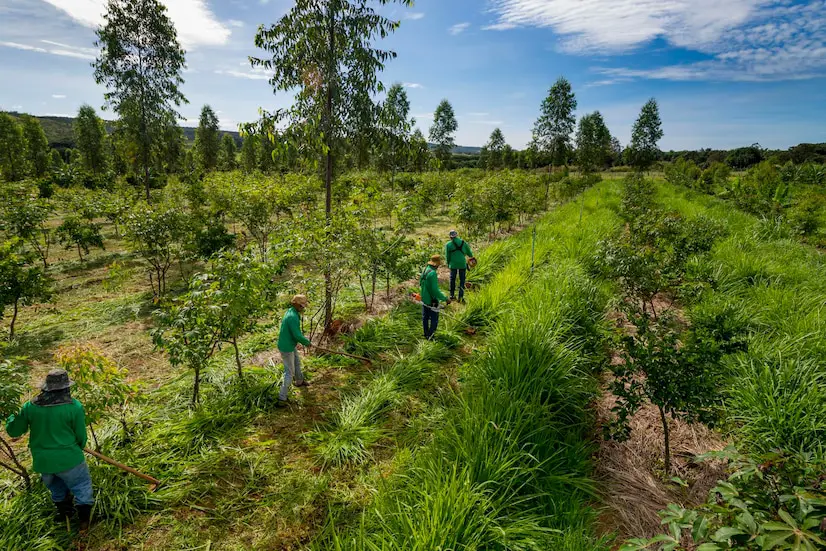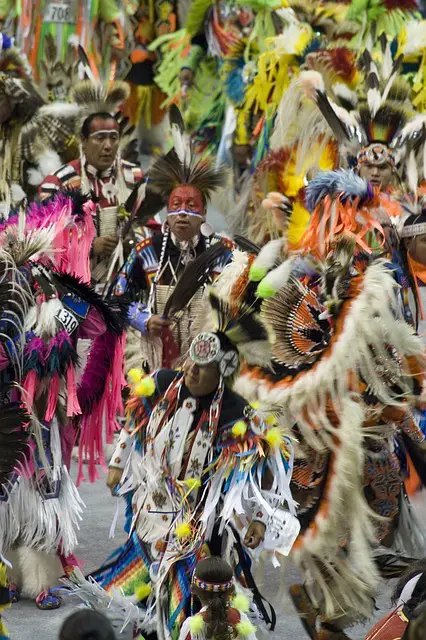For many Native Americans in the USA today, it is important to be recognized as members of a tribe. This signifies the affirmation of one’s identity, belonging to a defined community with its own culture and language. While other social groups fought for democratic rights and public visibility, Native Americans advocated for their sovereignty. They could only preserve their traditions within the reservations or communities assigned to them, but the necessary infrastructure to live there was often lacking. They have managed to negotiate some privileges that benefit tribal members and allow for a dignified life, yet they still must fight for equal treatment and acceptance. Life on tribal lands is not luxurious, but housing, education, and healthcare are often more affordable than outside. At the heart of their political demands is the return of stolen territories. For the tribes, the land is sacred; it represents their connection to history, ancestors, and the cultural and spiritual identity of the tribe.
Agriculture
Many Indigenous people still practice sustainable agricultural methods that respect natural resources. They maintain traditional practices such as gathering wild plants, hunting, and fishing—while ensuring healthy wildlife populations—and agricultural techniques passed down through generations. Their practices are ecologically focused and aim to maintain balance between humans and the environment. They primarily produce food to sustain the community rather than for commercial purposes. Growing a diversity of crops promotes biodiversity, controls pests and diseases, and preserves soil fertility. They adapt their cultivation to local ecological conditions to conserve natural resources. Their methods rely on experience and local knowledge, including terrace farming, intercropping, irrigation techniques, and agroforestry. This knowledge is continually adapted, allowing strategies to respond to environmental changes like droughts, floods, or soil erosion.

The centuries-old knowledge of Indigenous people is increasingly recognized by non-Indigenous groups as valuable. Collaborative projects focusing on sustainable agriculture and resource protection are developing, such as agroforestry, crop diversity and cultivation methods, land management, and conservation. The exploitation and monocultures of non-Indigenous people and their consequences require a change in approach. The traditional practices of tribes contribute to soil fertility, biodiversity, and the preservation of natural resources. The healthy combination of traditional and modern techniques, the exchange of knowledge, and the Indigenous connection to nature can significantly support environmental protection, food security, and cultural sustainability. Through dialogue and cooperative work, innovative approaches can be developed that address both the needs of the communities and the challenges of the modern agricultural sector. Furthermore, collaboration has led to more negotiations regarding the return of land, which is then jointly used and cultivated.
Cultural Identity
Crafts
Traditional crafts have survived in many communities as they play an important role in preserving cultural and spiritual identity as well as knowledge transmission. This includes weaving, pottery, jewelry making, carving, the creation of traditional clothing, and body adornments.

Language
Before the arrival of European settlers, there were about 300 different Indigenous languages. Today, roughly 174 languages are still considered living. Many are endangered, prompting efforts to preserve and revive them. Indigenous education programs, language schools, and community initiatives work to maintain these languages and pass them on to younger generations. In some communities, the Indigenous language is still spoken daily or has been revived. Some of the most well-known are Navajo, Dakota, Lakota, Ojibwe, Cherokee, Apache, Choctaw, and Hopi. These languages belong to different language families and are spoken by different tribal groups.
Traditions and Rituals
Despite oppression and assimilation efforts, many religious practices and traditions of Native Americans have survived to this day. It is important to note that there are different Indigenous peoples, each with their unique practices and traditions. Accordingly, these may vary by tribe, reflecting specific spiritual and cultural beliefs. Rituals and ceremonies often involve connection to nature, ancestor worship, spiritual purification, dance, and song.
The Sun Dance ceremony, practiced in many North American cultures, is an intense spiritual ritual in which dancers fast, pray, and dance for several days to strengthen their connection to the spiritual world and promote the well-being of the community.
Another widely practiced ceremony is the sweat lodge, which serves to cleanse the body, mind, and spirit. Participants sing, pray, and perform purification rituals inside the sweat lodge.
Healing ceremonies are of great importance in many Indigenous communities. They include specific rituals, prayers, songs, and herbal medicines to support physical, mental, or spiritual healing. Even today, these rituals are performed by shamans or medicine men/women.
Powwows, in contrast, are public events that are more secular in nature. Members of different tribes come together to celebrate their culture. They include traditional dances, music and songs, crafts, and communal activities. Powwows also serve as a platform for passing on cultural knowledge and strengthening community bonds.

The influence on non-Indigenous people is also noticeable. Not only does the growing interest in Native American culture and history promote acceptance and engagement in protecting Indigenous rights and issues, but there is also increasing interest in spiritual practices. These serve as inspiration for self-exploration, deeper spiritual understanding, connection to nature, and a holistic view of life. Indigenous patterns, designs, and symbols are also increasingly incorporated into art and crafts or serve as inspiration.
